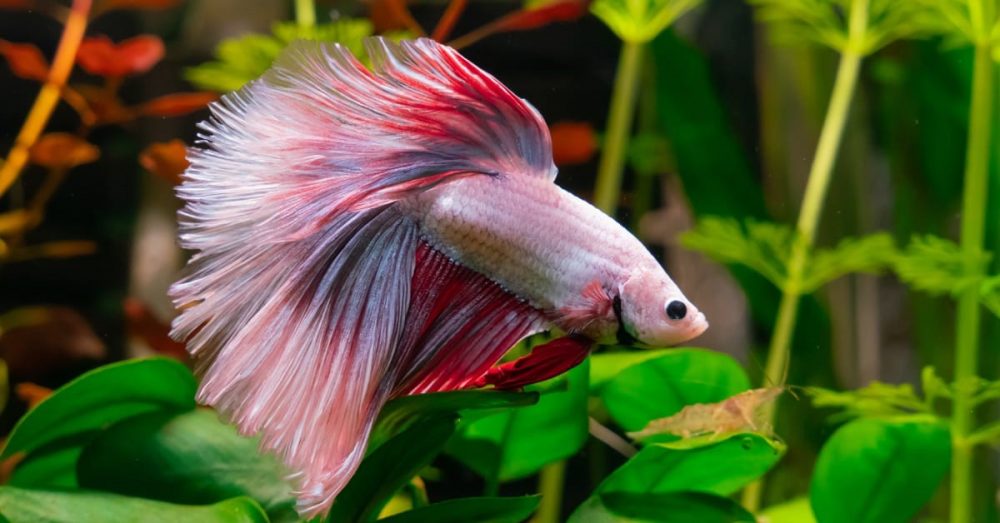Are you looking for a new pet but do not want to deal with the hassle of owning a dog or cat? Consider getting a betta fish. Learn more about the world’s most beloved type and how to take care of a Betta fish in this article.
Betta fish, also known as Siamese, is widely available in the pet trade. Southeast Asia is their habitat. First established in the 1920s. Bettas are tropical fish that come from rice paddies in Thailand and nearby countries.
Besides a plethora of fins, Betta fish also come in several excellent species that you might find interesting because of their beautiful colors.
Caring for a Betta fish is the same as a tropical fish, although the latter requires more attention. However, the lifespan of these fish can reach up to 7 years if they are properly taken care of.
Checklist for Betta Care
A betta fish is delicate. Being a fish pet parent means knowing what your pet needs regarding habitat, water, and diet. In this article, you’ll learn all the basics of caring for a betta fish to grooming them.
Betta Tank Dimensions and Habitat
Bettas live in small bodies of slow-moving water, such as rice paddies or swamp ponds, in the wild. Therefore, caring for betta fish is easy if you provide an environment miming its natural habitat. It should be more like a garden than a fish bowl. For your Betta to thrive, it needs plenty of room to explore, rest, hunt, and hide.
Furthermore, the best tank for a betta depends on the species, but some general recommendations include 5 gallons of water minimum per enclosure. On top of that, ensure that your tank is balanced because betta fish utilizes its distinct labyrinth organ to receive oxygen from the water’s edge. Therefore, bettas do not rely on air pumps.
However, be mindful that bettas are jumpers. The fish usually hop when they reach the water’s surface oxygen to get as much oxygen as possible. That’s why you must ensure the aquarium has a lid, and in any case, you remove the lid and put it back to the best of your ability.
Water Filtration for Betta Fish
Consequently, filtration is not required. Since Betta fish are weak swimmers, the current through the filter makes them stress out, which causes them to become irritated, damage their fins, and even die. As a little help to yourself, install pre-filters at inlets and outlets.
An Aspect of Lightning for Bettas
Furthermore, as their nature is to play during the day and rest at night, they require natural light. For aquacultures in palaces with poor natural lighting, artificial lights are required to regulate their life according to nature. Ensure they are turned off overnight for their well-being.
Water Quality and Temperature for Bettas
Bettas have specific habitat requirements, in which the temperature and water conditions are crucial. However, they are native to Thailand and can survive at water temperatures between 68 and 86 degrees Fahrenheit.
To keep your betta fish healthy and prevent your betta fish from getting an illness, ensure the temperature of aquarium water with the thermometer. If the temperature is low, adding a heater will help the lifespan of the little creature.
Moreover, The water condition for bettas fish is really important because they flourish best in soft, acidic, and slightly more alkaline water with a slightly elevated hardness. If the pH level is not appropriate, it can lead the fish to several diseases. Therefore, ensure that the pH level is between 6.5 to 7.5. However, distilled water is not recommended.
Possibilities of Putting Another Fish in the Tank
There are many types of feisty Betta fish, each with a personality. However, Siamese fighting fish is bred to participate in a fighting contest called a betta battle. Consequently, bettas tend to defend their territory, so don’t keep two males in the same tank to prevent aggressive behavior.
It is still possible to have female bettas coexist peacefully with other females if introduced properly, which includes enlarging their enclosures with their needs and adding a gallon of water per length.
Even so, male and female bettas can’t live together. If you’re trying to breed the species, keep them for a few days, then split them up. However, some other fish species can live in harmony with male bettas.
Upkeep and Cleaning
Caring for your pet fish requires more than just filling the tank and adding fish food. The delicate and fragile fish somehow need extra care when cleaning their surrounding. They are usually accustomed to their enclosure, so after a few days, remove 25% of the water and clean 100% once a week if the filter is not installed. Yet if the filter is available, 25% of water changes weekly, and 100% needs to clean per month.
Diet Plan
Feeding your betta fish is one of the more important parts of fish care. Bettas are carnivores and eat meat. their species originate in the rice paddy fields of Thailand. They eat a lot of insects and other invertebrates that are present in water. The best food for betta fish includes pellets, flakes, and worms, but brine shrimps and bloodworms are their top picks.
For these beautiful fish to be nourished, they will need to feed 2 to 3 times a day. Overdosing them can cause certain diseases in them.
When to Call for Help?
It is a common fact that every living thing has its own habitat to survive. These fragile little ones are more sensitive when it comes to their surrounding. However, you should see a veterinarian immediately if you find any symptoms, like loss of appetite, cloudy eyes, fungus, rotted fins, etc.
Conclusion
The beautiful, spirited Betta fish are not easy to look after, but you can make them love you with extra care and love. Therefore read the above article and clarify your intuition on how to take care of Betta Fish.








